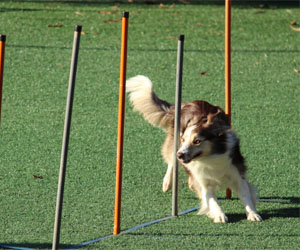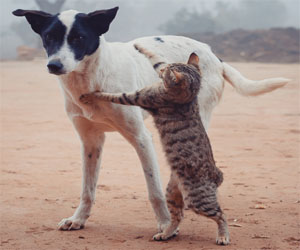


Unraveling The Mysteries With Critical Inquiry

The enigmatic phenomenon of crop circles has long captured the public's imagination and generated passionate discussions. While many are quick to embrace extraterrestrial or paranormal explanations, a significant degree of skepticism surrounds crop circles. In this article, we delve into the skepticism that questions the paranormal and proposes more down-to-earth explanations for these intricate designs etched into fields of crops.
Elaborate Hoaxes And Pranks
One of the most prevalent forms of skepticism surrounding crop circles centers on the idea that the majority of these formations are elaborate hoaxes and pranks carried out by individuals or groups. Over the years, there have been numerous instances where the creators of crop circles have come forward, admitting to using simple tools, such as boards and ropes, to craft their designs under the cover of darkness. This revelation has reinforced the belief that human artistry, rather than otherworldly forces, is responsible for most crop circles.
Inconsistent Witness Testimony
Another factor that contributes to skepticism is the inconsistency in witness testimony regarding the creation of crop circles. While some witnesses claim to have seen inexplicable lights or experienced unusual phenomena near the formations, others maintain that they saw no such occurrences. These inconsistencies raise questions about the reliability of eyewitness accounts and their correlation to the paranormal.
Lack Of Concrete Evidence
Skeptics argue that despite decades of crop circle observations, there is a notable absence of concrete, irrefutable evidence linking these formations to extraterrestrial activity or unexplained natural phenomena. They emphasize the need for empirical evidence, such as samples of crop circle materials with extraordinary properties, which could help substantiate the paranormal claims. The lack of such evidence, according to skeptics, weakens the case for otherworldly involvement.
Natural Explanations
Many skeptics point to well-documented natural explanations for crop circles as evidence against paranormal theories. These natural processes include meteorological phenomena like whirlwinds, wind patterns, and plant physiology. Skeptics argue that these factors can account for the intricate designs and geometric precision often observed in crop circles. They maintain that these natural explanations are more plausible and less convoluted than attributing the formations to extraterrestrial forces.
Artistic And Human-Made Motives
Skepticism extends to the notion that some crop circles are created purely for artistic expression or as elaborate pranks. The intricate and aesthetically pleasing designs seen in many formations can be viewed as the result of human creativity rather than otherworldly communication. The desire for attention and the challenge of crafting complex patterns can be powerful motivations for individuals or groups to create these formations.
Skepticism surrounding crop circles highlights the importance of critical inquiry and empirical evidence when exploring mysterious phenomena. While the allure of paranormal explanations remains strong for some, the skeptics remind us of the need for a rigorous examination of the evidence and the consideration of natural and human-made factors before embracing extraordinary theories. The debate continues, but it is the skeptical viewpoint that underscores the scientific method's importance in understanding the unexplained.
Unleashing Canine Athleticism And Bonding
 What Is Agility Training?
What Is Agility Training?
Agility training is a dog sport that involves navigating a timed obstacle course. These courses can vary in complexity but typically include jumps, tunnels, weave poles, A-frames, and seesaws. The dog's task is to complete the course as quickly as possible, following their handler's commands and without knocking down any obstacles. The sport is not just about speed; it also requires precision and teamwork between the dog and their owner.
Physical Exercise And Mental Stimulation: Agility courses provide dogs with an excellent physical workout. Running, jumping, climbing, and weaving through obstacles help maintain a dog's fitness and health. This is especially beneficial for high-energy breeds, as it allows them to expend their excess energy in a constructive way. In addition to physical exercise, agility training offers significant mental stimulation. Dogs must follow commands, make quick decisions, and memorize the course, which challenges their cognitive abilities.
Building A Strong Bond: One of the most remarkable aspects of agility training is the bond it creates between dogs and their owners. The sport requires clear communication, trust, and cooperation. Handlers use verbal commands and hand signals to guide their dogs through the course. This teamwork enhances the connection between the two, as they learn to anticipate each other's movements and work together harmoniously.
Boosting Confidence: Agility courses also boost a dog's confidence. As they master obstacles and successfully complete courses, dogs gain a sense of accomplishment. This newfound confidence often carries over into other aspects of their lives, making them more well-adjusted pets.






The Enduring Debate
 One of the most prominent arenas where this debate takes place is in the realm of the paranormal and the supernatural. Believers in paranormal phenomena such as ghosts, UFOs, and psychic abilities assert that there is unexplained and mystical activity in the world. They often rely on anecdotal evidence, personal experiences, and the testimony of others to support their claims. Skeptics, on the other hand, demand empirical evidence, scientific scrutiny, and rigorous investigation before accepting such assertions. The believers-skeptic debate in this context often comes down to a fundamental difference in the burden of proof, with skeptics maintaining that extraordinary claims require extraordinary evidence.
One of the most prominent arenas where this debate takes place is in the realm of the paranormal and the supernatural. Believers in paranormal phenomena such as ghosts, UFOs, and psychic abilities assert that there is unexplained and mystical activity in the world. They often rely on anecdotal evidence, personal experiences, and the testimony of others to support their claims. Skeptics, on the other hand, demand empirical evidence, scientific scrutiny, and rigorous investigation before accepting such assertions. The believers-skeptic debate in this context often comes down to a fundamental difference in the burden of proof, with skeptics maintaining that extraordinary claims require extraordinary evidence.
In the sphere of religion, the debate between believers and skeptics has been a cornerstone of human history. It extends beyond individual beliefs to encompass entire religious systems and worldviews. While believers find spiritual fulfillment, moral guidance, and a sense of purpose in their faith, skeptics raise questions about religious dogma, contradictions in holy texts, and the lack of empirical evidence for the existence of deities. The existence of God, the nature of the afterlife, and the validity of religious doctrines are recurring points of contention.
A Guide To Feline Well-Being
 2. Regular Veterinary Care
2. Regular Veterinary Care
Routine veterinary care is crucial for maintaining your cat's happiness. Regular check-ups and vaccinations are essential for preventing illness and ensuring your cat's well-being. Your veterinarian can also address any health issues and provide guidance on preventive care.
3. Emotional And Social Needs
Cats may be independent, but they are not solitary creatures. They require social interaction and affection. Spend quality time with your cat, petting and talking to them. Building a strong bond with your cat is a surefire way to enhance their happiness.
4. Mental Stimulation
Cats are curious creatures that need mental stimulation to be content. Provide them with toys, puzzles, and interactive playtime. Toys like feather wands, laser pointers, and treat-dispensing puzzles can keep your cat engaged and mentally active.
A Guide To Effective Dog Training
 Positive Reinforcement
Positive Reinforcement
Positive reinforcement is one of the most effective methods for cultivating good behavior in your pup. This technique involves rewarding your dog when they exhibit desirable behavior. Treats, praise, toys, and affection are common rewards. When your pup associates good behavior with positive outcomes, they are more likely to repeat those actions.
Clicker Training
Clicker training is a precise and rewarding method for teaching dogs new behaviors. A small device, the clicker, emits a distinct sound that signals to your pup when they have performed the desired action correctly. This method enables clear communication and makes it easier for your pup to understand and learn commands.
Obedience Training
Obedience training focuses on teaching your pup essential commands like sit, stay, and come.
A Call To Action For A Sustainable Future
 Understanding The Climate Crisis: The climate crisis, often referred to as global warming or climate change, stems from the excess emission of greenhouse gases into the Earth's atmosphere. These emissions, primarily from burning fossil fuels and deforestation, trap heat, leading to a rise in global temperatures. The consequences are far-reaching, including more frequent and severe droughts, storms, sea-level rise, and disruptions to ecosystems.
Understanding The Climate Crisis: The climate crisis, often referred to as global warming or climate change, stems from the excess emission of greenhouse gases into the Earth's atmosphere. These emissions, primarily from burning fossil fuels and deforestation, trap heat, leading to a rise in global temperatures. The consequences are far-reaching, including more frequent and severe droughts, storms, sea-level rise, and disruptions to ecosystems.
The Urgent Need For Action: The urgency of the climate crisis response cannot be overstated. Failure to address this crisis threatens the well-being of people, ecosystems, and economies worldwide. It also exacerbates global inequality and poses a significant risk to future generations.
Key Components Of Climate Crisis Response:
Mitigation: Mitigation strategies aim to reduce greenhouse gas emissions and slow down the rate of climate change. This involves transitioning to renewable energy sources, improving energy efficiency, and implementing policies to limit emissions from transportation, industry, and agriculture.
Adaptation: As the effects of climate change are already underway, adaptation is essential. It includes measures to protect communities from rising sea levels, extreme weather events, and changing climate patterns. Adaptation strategies may involve infrastructure improvements, flood defenses, and sustainable land management.
Renewable Energy: The transition from fossil fuels to clean, renewable energy sources is a cornerstone of the climate crisis response. Solar, wind, hydropower, and geothermal energy offer sustainable alternatives to coal and oil, significantly reducing carbon emissions.